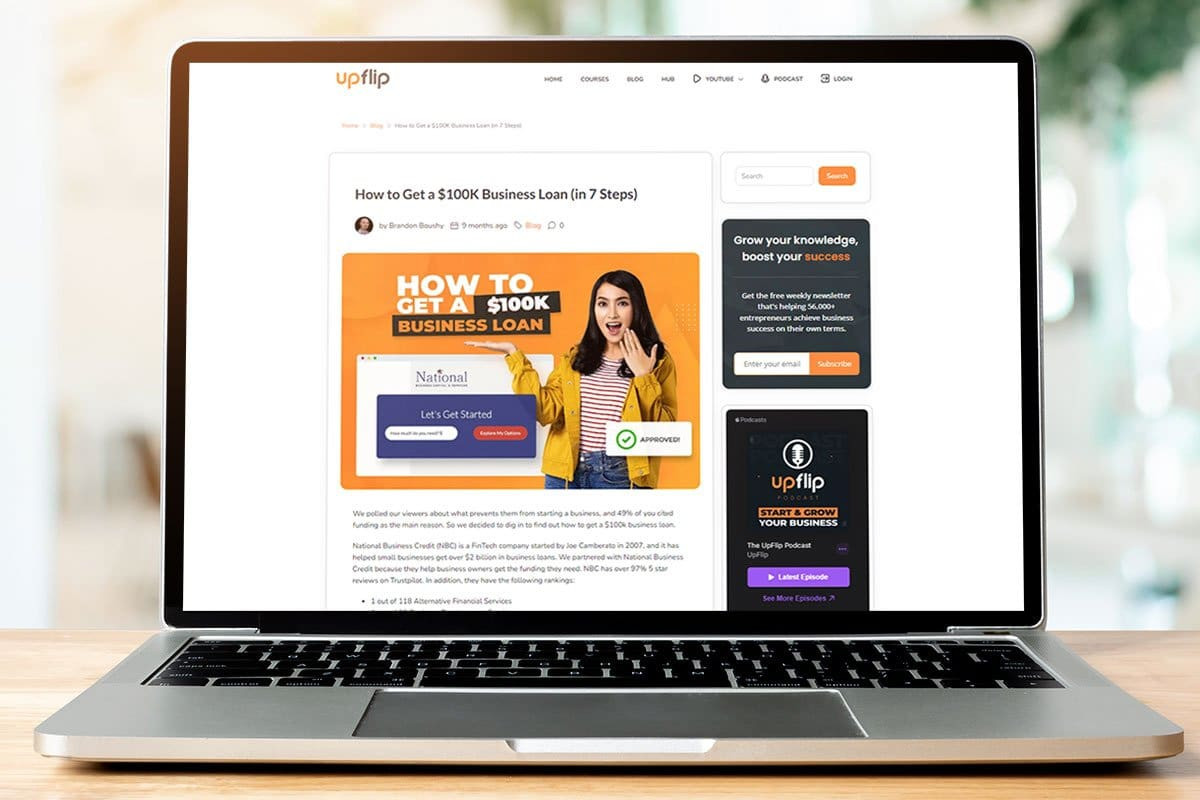Dreaming of business ownership but worried about the upfront costs? You might be surprised to learn that buying a business with no money down, or very little, is more achievable than you think. Seller financing is a popular route, with nearly 80% of business acquisitions incorporating it in some form. This guide, crafted by the financial experts at money-central.com, will explore various strategies to buy a business even when your funds are limited. We’ll delve into smart acquisition tactics and negotiation techniques to make your entrepreneurial dreams a reality.
Exploring Pathways to Business Acquisition Without Capital
 Broken open, empty piggy bank with a for sale sign, symbolizing buying a business with no money.
Broken open, empty piggy bank with a for sale sign, symbolizing buying a business with no money.
Acquiring an existing business might seem financially daunting, but several funding avenues can minimize or eliminate your upfront investment. By strategically combining these methods, you can navigate the purchase process even with limited personal capital. Common funding options to consider include:
- Seller Financing: Leveraging the seller’s own funds to finance the purchase.
- SBA Loans: Utilizing Small Business Administration loans designed for business acquisitions.
- Investor and Partner Acquisition: Bringing in external investors or partners to share the financial burden.
Let’s examine each of these options in detail to understand how they can facilitate a no-money-down business purchase.
Seller Financing: Partnering with the Previous Owner
Seller financing, also known as owner financing, stands out as a frequently used method for business transitions. Industry data from mergers and acquisitions specialists like Morgan & Westfield indicates that approximately 80% of small business acquisitions involve some degree of seller financing. This highlights its prevalence and effectiveness.
In a seller financing arrangement, the seller effectively becomes the bank, financing a portion of the business’s purchase price. In return, they receive a percentage of the business’s cash flow over a predetermined period after the ownership transfer. Typically, the buyer contributes a down payment and then continues with periodic installments to cover the remaining balance.
The structure of seller financing deals generally includes terms along these lines:
- Seller Financed Percentage: Often ranges from 10% to 20% of the total deal value.
- Buyer Down Payment: Varies considerably, from 30% to 80%, with 50% being a common benchmark.
- Interest Rates: Typically between 6.6% and 16.5%, aligning with prevailing Small Business Administration loan interest rates.
- Loan Duration: Spans from three to seven years, allowing for a structured repayment period.
When proposing seller financing, expect to formalize the agreement with a promissory note, legally outlining the repayment terms. Sellers often secure their investment with a Uniform Commercial Code (UCC) lien, providing them with a legal claim on business assets in case of default. Furthermore, sellers might stipulate financial performance benchmarks that the business must meet to protect their interests.
SBA Loans: Government-Backed Funding for Business Acquisition
The Small Business Administration (SBA) provides loan programs specifically tailored to assist individuals in buying existing small businesses. SBA 7(a) loans are particularly advantageous for business acquisitions compared to startups. Established businesses possess a verifiable track record of profitability, making loan approval more likely as they represent a lower risk for lenders.
When applying for an SBA 7(a) loan for business acquisition, it’s crucial to request sufficient funding to not only cover the purchase price but also to ensure adequate working capital for ongoing operational expenses. This comprehensive approach sets the new business owner up for smoother initial operations.
Attracting Investors and Partners: Sharing Equity for Acquisition
Another viable strategy for buying a business without significant personal funds is to bring on investors or partners. This can take various forms, from informal arrangements like loans from friends and family to more structured approaches involving venture capitalists or even crowdfunding initiatives.
A Step-by-Step Guide to Buying a Business with Minimal Capital
 Empty wallet on a wooden desk next to business tools, representing buying a business with no money.
Empty wallet on a wooden desk next to business tools, representing buying a business with no money.
Buying a business without a substantial financial outlay is achievable by following a strategic, six-step process:
- Define Your Acquisition Goals: Clarify your objectives before starting your business search.
- Engage Business Brokers: Leverage the expertise of business brokers to streamline your search.
- Identify Suitable Businesses for Sale: Pinpoint businesses that align with your goals and financial capacity.
- Conduct Business Valuation: Determine the fair market value of potential acquisitions.
- Negotiate the Deal Effectively: Master negotiation to secure favorable purchase terms.
- Finalize the Deal and Transition: Successfully close the purchase and transition into business ownership.
Let’s explore each of these steps in detail to equip you with the knowledge to navigate the acquisition process.
Step 1: Define Your Acquisition Goals
Before diving into the business acquisition market, it’s essential to clearly define your objectives. Understanding your motivations will guide your search and decision-making process. Common reasons for buying an established business include:
- Risk Mitigation: Acquiring an existing, revenue-generating business inherently carries less risk than launching a startup, providing a more predictable income stream as established businesses have already navigated initial market challenges.
- Accelerated Retirement Planning: Leveraged buyouts can boost your income and maintain existing investments, accelerating your path to retirement by expanding your financial portfolio more rapidly.
- Growth Catalization: Leveraging financing for business acquisition is a powerful strategy for rapid business expansion, allowing entrepreneurs to scale operations quickly by acquiring established market positions.
- Enhanced Liquidity: Securing a business acquisition loan can improve a business owner’s cash flow, providing greater financial flexibility to manage operational costs and invest in growth opportunities.
Beyond these general goals, you might also have specific preferences regarding the business model, such as focusing on online businesses or pursuing passive income ventures.
Step 2: Engage Business Brokers
Navigating a business acquisition is a complex undertaking. Engaging an experienced business broker is highly advisable to ensure a smooth and successful transaction. Business brokers bring significant value because they:
- Possess Deal-Closing Expertise: They are seasoned in managing all phases of business acquisitions, from initial contact to final closing.
- Utilize Advanced Tools for Business Identification and Evaluation: Brokers have access to networks and resources that help locate suitable businesses and assess their financial health.
- Manage Complex Paperwork: They are proficient in handling the extensive documentation required for business acquisitions, ensuring compliance and accuracy.
- Provide End-to-End Process Guidance: Brokers offer invaluable support and advice throughout the entire acquisition journey, from initial search to post-closing transition.
Once you’ve selected a broker, the next step is to refine your business acquisition criteria based on your goals and financial situation.
Step 3: Identify Suitable Businesses for Sale
Finding the right business to buy is now easier than ever, thanks to numerous online business listing platforms. These platforms include:
- BizBuySell: A leading marketplace for buying and selling businesses.
- BusinessesForSale: A global directory of businesses available for acquisition.
- Flippa: Primarily focuses on online businesses, websites, and domain names.
- Your local business brokerage websites: Often list regional businesses for sale.
When searching for a business, aim for deals that are mutually beneficial. Ideal targets often possess specific characteristics that make them attractive for acquisition, particularly under financing arrangements.
Seek Out Motivated Sellers
 Casually dressed man sitting on a couch reviewing business documents, representing reviewing business opportunities.
Casually dressed man sitting on a couch reviewing business documents, representing reviewing business opportunities.
Acquiring a business becomes significantly smoother when the seller is actively seeking to exit and is motivated to sell quickly. Understanding the seller’s reasons for selling is crucial. Common motivations include:
- Retirement Planning: Sellers looking to retire are often eager to facilitate a quick and efficient sale.
- Family Care Responsibilities: Personal circumstances requiring relocation or increased family care can motivate a sale.
- Operational Challenges: Businesses facing issues such as outdated equipment, lack of automation, high customer churn, ineffective marketing, declining revenue, or employee turnover may be put up for sale as the current owner seeks to exit rather than resolve these problems.
Each of these challenges, paradoxically, presents an opportunity for a new owner. These situations can translate into a more favorable purchase price or make seller financing more accessible, as the seller may prioritize a smooth and rapid exit.
Prioritize Businesses with Growth Potential
Certain businesses inherently offer substantial growth opportunities under new ownership. Look for businesses characterized by:
- Outdated Technology: Implementing updated technology systems can drastically reduce operational costs and improve efficiency. SBA loans are specifically available to support businesses in upgrading their technology.
- Limited Competitive Pressure: Businesses in less competitive markets are poised for significant growth when innovative strategies and improvements are introduced, as they face less resistance from competitors.
Focus on Familiar Business Models
 Concept of a man doing a local business search on a tablet, representing researching local businesses.
Concept of a man doing a local business search on a tablet, representing researching local businesses.
While venturing into unfamiliar business sectors is possible, it’s generally wiser to target businesses within your realm of expertise or within well-understood industries. Key factors to consider include:
- Business Longevity: Established businesses with a long operating history often provide a more stable financial foundation and a recognizable brand to build upon, reducing initial uncertainties.
- Familiar Business Models: Opting for business models you understand minimizes the learning curve and associated risks, allowing for quicker integration and strategic implementation. Acquiring a business in an unfamiliar sector adds both time and risk as you learn the nuances of the industry.
After identifying potential businesses, the next critical step is to thoroughly evaluate their financial standing to determine a fair valuation.
Step 4: Value the Business
A crucial step in the acquisition process is visiting the business in person. This on-site visit allows you to observe its operations firsthand, identify areas for improvement, and gather insights not discernible from financial documents alone.
If the initial assessment is positive, the next step is to submit a Letter of Intent (LOI) to the business owner. This non-binding document signals your serious interest and initiates the due diligence phase, granting you access to deeper financial and operational details.
During due diligence, a thorough review of financial statements is paramount, focusing on:
- Cash Flow: Understanding the business’s cash generation capability.
- Operating Expenses: Analyzing the cost structure to identify potential efficiencies.
- Accounts Receivable: Assessing the business’s ability to collect payments.
- Outstanding Debt: Evaluating existing liabilities that could impact future financials.
Furthermore, assess the age and condition of equipment to anticipate potential capital expenditures for replacements or upgrades. Equipment can sometimes be used as collateral for securing funding.
Preparing a comprehensive list of questions to ask when buying a business is highly recommended to guide your due diligence. Subsequently, calculating a precise business valuation is essential. This valuation will serve as the foundation for determining your offer price and negotiation strategy.
Step 5: Negotiate Your Deal
 Business people shaking hands over a board room table, representing business negotiation and agreement.
Business people shaking hands over a board room table, representing business negotiation and agreement.
Negotiating the purchase of a business involves reaching a price and terms that are equitable for both buyer and seller. You can negotiate both the total purchase price and the specific terms of the sale, but it’s crucial to prioritize which aspects are most important to you and to understand the seller’s priorities as well.
If you have secured multiple financing options or are prepared to invest your own capital upfront, you might prioritize negotiating a lower purchase price. Conversely, if you are pursuing seller financing, you might be willing to agree to the asking price in exchange for more favorable financing terms, such as lower down payments or extended repayment periods.
Offer Attractive Interest Rates in Seller Financing
 Interest accrual concept shown with coin stacks and percentage signs, representing interest rates in financing.
Interest accrual concept shown with coin stacks and percentage signs, representing interest rates in financing.
To make seller financing more appealing to the seller, consider offering a slightly higher interest rate than prevailing market norms.
For example, if a seller is asking for $500,000 and you propose a seven-year repayment plan, the annual payments might be a point of negotiation. Offering to increase the interest rate can make the deal more attractive to the seller while still allowing you to manage cash flow effectively.
Consider these hypothetical offers for a $500,000 business with $100,000 down payment:
- $500K upfront payment.
- $100K down, $478K over 2 years (10% interest equivalent).
- $100K down, $504K over 3 years (10% interest equivalent).
- $100K down, $528K over 4 years (10% interest equivalent).
- $100K down, $550K over 5 years (10% interest equivalent).
- $100K down, $575K over 6 years (10% interest equivalent).
- $100K down, $630K over 7 years (Higher than 10% interest, offering an extra $4K per year to seller).
The last option, with a slightly higher interest rate, pays the seller more over time but allows you to conserve more cash annually, potentially making it a win-win scenario depending on your cash flow projections.
Consider a Silent Partner for Capital Infusion
If upfront capital is a constraint, bringing in a silent partner can bridge the financial gap. Silent partners contribute capital and typically share in the profits but do not participate in the daily management of the business.
Venture capital might also be an option, although venture capitalists usually seek a more active role in the business’s operations. When considering venture capital, ensure you negotiate for a silent partner arrangement if you prefer to maintain operational control.
Explore Secondary Financing Sources
 UpFlip’s blog post about business loans on a laptop screen, representing business loan resources.
UpFlip’s blog post about business loans on a laptop screen, representing business loan resources.
Seller financing often doesn’t cover the entire purchase price. To bridge the remaining funding gap, explore secondary financing options. Loans like SBA loans or traditional bank loans can be secured using business assets such as equipment or accounts receivable as collateral.
Leverage Crowdfunding for Capital Raising
Crowdfunding offers alternative financing avenues to raise capital. Through crowdfunding platforms, you can solicit funds from a large number of individuals. In return for their contributions, you can offer incentives like products, equity in the business, or a promise to repay the funds, similar to a loan.
Utilize Business Cash Flow for Loan Security
A strategic approach to securing a loan for business acquisition is to leverage the business’s own cash flow or accounts receivable. Lenders may agree to regular deductions from the business’s cash flow to service the debt. This method allows you to buy a business with minimal upfront investment, as the loan is secured against the business’s future earnings.
Factor in Growth Financing
 Woman reading a blog post about business plans on a laptop, representing business planning and growth strategy.
Woman reading a blog post about business plans on a laptop, representing business planning and growth strategy.
When arranging financing, it’s crucial to allocate funds not just for the purchase price but also for anticipated improvements and operational expenses. Developing a detailed business plan is often necessary to demonstrate to lenders how the funds will be utilized to generate revenue and ensure loan repayment. A well-structured business plan outlining your strategy for growth and profitability significantly strengthens your loan application.
Step 6: Close the Deal and Transition to Ownership
Once you’ve navigated legal and financial due diligence, secured financing, made the down payment, and signed the purchase agreement, the final step is transferring ownership. This involves several critical actions:
- Develop a Transition Timeline: Create a detailed plan outlining the operational handover process to ensure business continuity.
- Build Employee Relationships: Establish rapport with existing employees to maintain morale and operational stability during the transition.
- Transfer Legal and Financial Assets: Ensure the seamless transfer of all authorizations, contracts, bank accounts, and other legal and financial instruments.
- Hire an Operator (If Passive Investor): If you intend to be a passive investor, recruit a competent operator to manage the day-to-day business activities.
Why Buy, Not Start? The Advantages of Acquisition
 Excited young woman business owner celebrating success while looking at her laptop, representing the excitement of business ownership.
Excited young woman business owner celebrating success while looking at her laptop, representing the excitement of business ownership.
Starting a business from scratch, especially without substantial capital, presents significant challenges. New businesses face steep learning curves and often struggle to afford essential resources like experienced staff or freelancers until revenue streams are established.
In contrast, buying an existing business, even with limited funds, is a well-trodden path to entrepreneurship. You inherit an existing revenue base, established operational systems, and a customer base. Your initial focus can then shift to optimizing operations and addressing identified areas for improvement, rather than building everything from the ground up.
Have you successfully acquired a business with minimal capital? Share your experiences and insights! Your stories can provide valuable encouragement and practical advice to aspiring business owners.